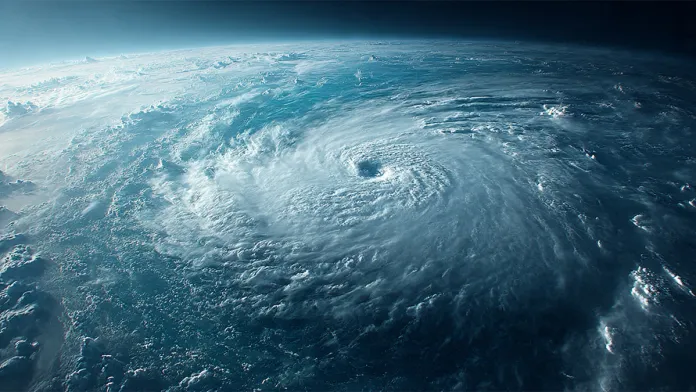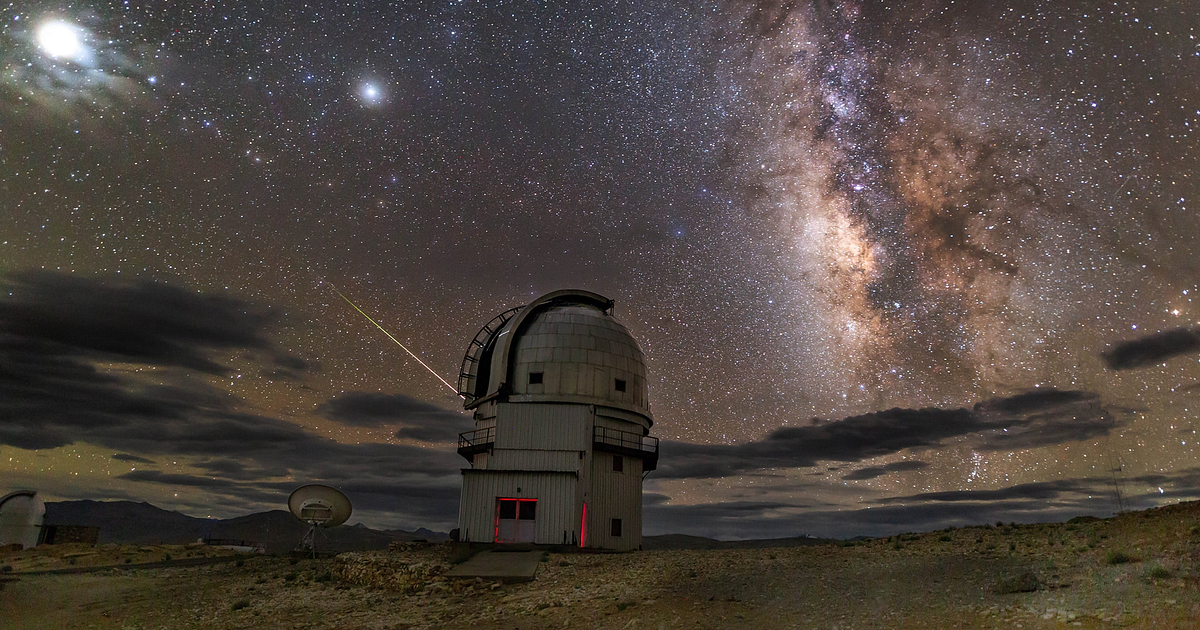Context
In October 2025, a deep depression over the southeast Bay of Bengal intensified into Cyclone Montha, leading Andhra Pradesh to issue red and orange alerts, place disaster response teams on standby, and direct authorities to closely monitor essential services and ensure real-time information flow to control rooms.
What Is a Cyclone and How is it Defined Meteorologically?
- A cyclone is a large low-pressure system where winds rotate in an organized spiral around a central point.
- Meteorologically, cyclones are classified based on their wind speed and intensity. In the North Indian Ocean, the India Meteorological Department (IMD) categorizes them as depression, deep depression, cyclonic storm, severe cyclonic storm, etc.
- A severe cyclonic storm usually has wind speeds between 89 and 117 kmph, strong enough to cause significant rainfall, flooding, and coastal damage.
What are the Different Types of Cyclones? (Tropical vs Extratropical)
- Tropical cyclones form over warm tropical oceans and have a warm core; they derive energy from ocean heat (latent heat of vaporisation) and moist convection and often produce strong winds and heavy rain near their cores.
- Extratropical cyclones form in middle latitudes along temperature gradients and fronts. They are cold-core systems driven by baroclinic (temperature-contrast) processes and usually affect temperate regions.
How is a Cyclone Formed? (Scientific and Environmental Conditions)
- Tropical cyclones require sea surface temperatures above about 26-27°C, sufficient atmospheric moisture, and low vertical wind shear (winds at different heights shouldn’t vary too much in speed or direction, otherwise the storm gets torn apart) so that a vertically stacked vortex can form.
- Vertically stacked vortex: The rising column of air spins in a tight, aligned tower from the ocean surface up to the sky, keeping the cyclone strong and organized.
- A pre–existing low–pressure disturbance or convergence in the lower atmosphere is needed, along with Coriolis force (so cyclones rarely form within about 5° of the equator).
- Convective thunderstorms consolidate and release latent heat, making the surrounding air warmer and the low-pressure area stronger.
Where do Cyclones Typically Occur in India and Why?
- Cyclones form over both the Bay of Bengal (east coast) and the Arabian Sea (west coast), but the Bay of Bengal is significantly more active, producing most of India’s tropical cyclones because of warmer waters, favourable monsoon dynamics and geography.
- Major landfall-prone regions include Odisha, Andhra Pradesh, West Bengal, Tamil Nadu, Gujarat and Kerala; the Bay of Bengal’s enclosed geography funnels storms toward the east coast.
- Notable recent and historical cyclones include the 1999 Odisha Super Cyclone (extremely destructive), Cyclone Fani (2019), Cyclone Amphan (2020), Cyclone Asani (2022) and Cyclone Michaung (2023); each caused major damage to life, property and infrastructure.
What is the Role of Climate Change in Altering Cyclone Patterns?
- Climate change can influence tropical cyclones by increasing the frequency of very intense storms, raising rainfall intensity, and possibly shifting the regions of maximum storm intensity.
- However, regional projections have varying confidence, and attributing individual cyclones to climate change remains complex.
- The IPCC notes evidence of a rise in the proportion of the most powerful tropical cyclones and changes in their behaviour under global warming, such as slower movement, higher storm surges, and longer-lasting rainfall.
Institutional Mechanisms and Policy Frameworks for Cyclone Management in India
- Institutional Mechanisms:
- The India Meteorological Department (IMD) provides cyclone detection, tracking and warnings for the North Indian Ocean.
- The National Disaster Management Authority (NDMA) issues national-level guidelines and coordinates disaster risk management planning.
- The National Disaster Response Force (NDRF) and State Disaster Response Forces (SDRFs) conduct search, rescue and relief operations during cyclones.
- Other stakeholders include the Ministry of Earth Sciences, Indian Navy and Coast Guard, state emergency departments, and local administrations who coordinate through state control rooms.
- Policy Frameworks:
- The Disaster Management Act, 2005 establishes the institutional framework (NDMA, State DMAs, Disaster Management Authorities at all levels) and mandates preparation of disaster management plans.
- The National Disaster Management Guidelines for Cyclones provide practice-oriented recommendations for preparedness, mitigation, and response, including building codes, early warning dissemination, and evacuation planning.
What steps can be taken for mitigation?
Pre-Disaster Mitigation and Preparedness measures:
- Early warning systems should be maintained and information should be communicated via SMS, IVRS (Interactive Voice Response System), social media and village-level networks to ensure timely evacuation.
- Coastal communities should have cyclone shelters, resilient housing, and evacuation routes planned and practised.
- Ports, power, telecom, and water utilities must have contingency protocols to reduce service disruption.
- State-level pre-positioning of NDRF/SDRF teams and relief stores is essential.
Immediate Response During a Cyclone:
- Authorities must issue timely and specific evacuation orders, move people to safe shelters, and maintain continuous communication with district control rooms.
- Rapid deployment of rescue teams (NDRF/SDRF), allocation of boats and medical teams, restoration of power and telecom, and distribution of food, water and medicines are urgent priorities.
Post-Disaster Recovery and Rehabilitation Steps:
- Post-cyclone actions include damage assessment, restoration of critical services, shelter support, healthcare, psychosocial support, and restoring livelihoods (fisheries, agriculture).
- Long-term recovery must prioritise rebuilding resilient infrastructure, retrofitting housing, and restoring ecosystems such as mangroves that protect coasts.
Challenges and Way Forward
| Challenges | Way Forward |
| 1. Incomplete last-mile warning delivery: Alerts often fail to reach remote coastal and island populations. | Deploy multi-channel early-warning systems (IVRS, mobile alerts, local radios) and train community volunteers for last-mile communication. |
| 2. Limited cyclone shelters and weak infrastructure resilience. | Build and maintain cyclone-resistant shelters and housing, and integrate resilience standards in coastal infrastructure. |
| 3. Coordination gaps among disaster agencies and under- resourced local units. | Establish integrated response frameworks and ensure funding and capacity-building for local disaster management bodies. |
| 4. Uncertainty due to climate change affecting cyclone intensity and rainfall prediction. | Strengthen forecasting models and incorporate climate projections into disaster planning and infrastructure design. |
| 5. Degradation of coastal ecosystems like mangroves and wetlands. | Promote mangrove restoration and create coastal green belts to buffer storm surges. |
| 6. Low community participation and awareness in preparedness measures. | Expand community-based preparedness and mock drills, ensuring public involvement in planning and early response. |
Conclusion
Effective cyclone management combines accurate science, robust institutions, community readiness and ecological protection. Investing in early warning systems, resilient infrastructure and nature-based solutions advances sustainable development goals and reduces human and economic losses from storms.
| Ensure IAS Mains Question Q. Why do cyclones frequently affect India’s coasts? Discuss the main challenges in managing cyclones and the steps needed to improve preparedness and response. (250 words) |
| Ensure IAS Prelims Question Q. With reference to the formation of tropical cyclones, consider the following statements: 1. Tropical cyclones generally form between 5° and 20° latitude on both sides of the equator. 2. High vertical wind shear is favourable for the development of cyclones. 3. Sea surface temperature of at least 26-27°C is required for cyclone formation. Which of the above statements is/are correct? a) 1 and 3 only b) 2 only c) 1 and 2 only d) 1, 2 and 3 Answer: a) 1 and 3 only Explanation: Statement 1 is correct: Tropical cyclones need some Coriolis force to spin, so they form between about 5° and 20° latitude, not right at the equator. Statement 2 is incorrect: High vertical wind shear (large change in wind speed/direction with height) disrupts cyclone formation. Low wind shear helps a cyclone grow vertically and stay organized. Statement 3 is correct: Warm ocean waters above 26-27°C provide the energy source for cyclones through evaporation and condensation. |
Also Read | |
| UPSC Foundation Course | UPSC Daily Current Affairs |
| UPSC Monthly Magazine | CSAT Foundation Course |
| Free MCQs for UPSC Prelims | UPSC Test Series |
| Best IAS Coaching in Delhi | Our Booklist |





